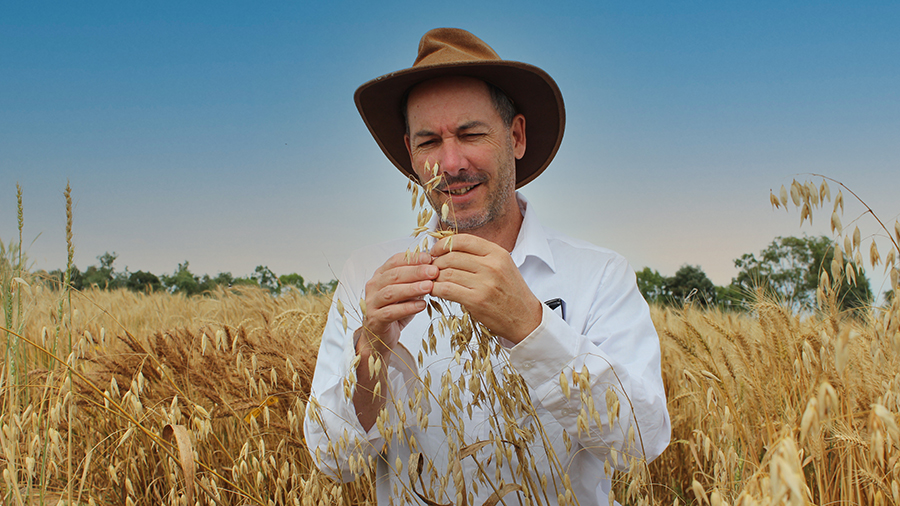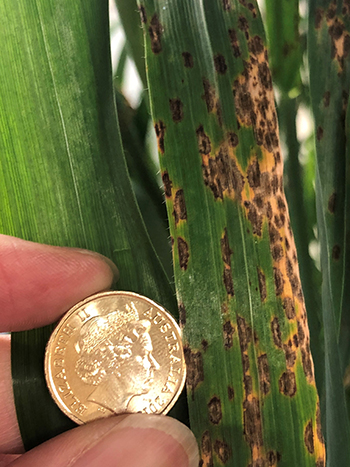With Asian demand for milling oats growing due to changing diets and the nutritional value of oats, GRDC has announced three new research projects to help Australian growers meet the needs of this comparatively small but expanding market.
GRDC manager of barley and coarse grains Dr Brett Ford says GRDC has invested $2.25 million over three years in three national research projects to maintain a consistent supply of milling oats.
“Oats are Australia’s fourth-largest cereal crop after wheat, barley and sorghum,” Dr Ford says. “They form an important part of crop rotations and are valued for their frost tolerance and competitiveness against weeds.”
But he says the rate of total yield genetic gain in oats is less than for other winter cereals such as wheat and barley, which are currently at 0.6 per cent per year. The new investments will improve and protect grain yields, with the ultimate aim of lifting the genetic gain in oats to similar levels, he says.
Growth and development
The first investment will look at the oat varieties currently available to ensure their growth and development is optimal for where they are planted.
CSIRO Agriculture and Food scientist Dr Ben Trevaskis, who leads the research, says the time of year when cereal crops flower and produce grain must coincide with optimal seasonal conditions for growers to achieve maximum grain yields and optimal quality.
“Variation in the time of flowering allows breeders to produce oat varieties suited to specific regions, climates and management practices.
“Genes that underlie this variation have been identified in wheat and barley, including genes that modify vernalisation (a requirement for the plant to be exposed to a period of cold during winter) and photoperiod (a requirement for a certain day length).”

CSIRO Agriculture and Food scientist Dr Ben Trevaskis checking some of his oat trials near Boorowa, New South Wales. Photo: Aswin Singaram Natarajan
Dr Trevaskis says knowledge of these ‘phenology’ genes is being applied to wheat and barley breeding and is used to develop gene-based models that predict when specific cultivars or varieties will flower at different sites or sowing dates, which can inform crop management decisions.
“Less is known about the genetic control of phenology in oats, though phenology underpins both adaptation and year-to-year environmental impacts on milling quality,” he says.
“An improved knowledge of the genetic control of oat phenology has the potential to drive gains in breeding and contribute to the development of new crop management tools.”
Dr Trevaskis says a first step for the research will be to survey genetic variation in global and Australian oat varieties. This information, together with pedigree records, will be used to develop a more-targeted oat ‘diversity panel’ that captures genetic diversity while also being relevant to Australian growers.
“The phenology of the core diversity panel will be assayed in controlled-growth conditions to resolve genes that control sensitivity to vernalisation, photoperiod or inherent earliness,” he says.
“Central to this analysis will be to better understand the function of the gene networks controlling flowering.”
Dr Trevaskis will then send the gene marker information to oat breeders to help better select parents and predict the outcomes of crosses.
Disease resistance
A second research investment seeks to identify new sources of genetic resistance to Septoria avenae blotch and better understand how the pathogen evolves and becomes virulent in oats.
The University of Adelaide’s Dr Tim Sutton, who leads this investment in partnership with the South Australian Research and Development Institute (SARDI), says Septoria avenae blotch is a significant oat disease, especially in Western Australia where almost all oat crops have some level of infection.
 Researchers are searching for novel sources of resistance to Septoria avenae blotch in oats. Photo: Yongle Li
Researchers are searching for novel sources of resistance to Septoria avenae blotch in oats. Photo: Yongle Li
“Septoria avenae blotch in oats is caused by a different species to the one that impacts wheat. In oats, the disease causes significant yield loss, but also impacts grain quality attributes such as increased screenings and dark spots on groats,” Dr Sutton says.
“The Septoria pathogen population is diverse and the plant genetic resistance is complicated, making breeding for durable resistance difficult.
“Although annual field screening for novel sources of resistance to Septoria has been an ongoing activity of the National Oat Breeding Program, this new investment will expand that effort, providing additional resources to characterise disease resistance genetics.”
Accordingly, the University of Adelaide and SARDI team will investigate the evolution and virulence of the pathogen population and expand the search for novel sources of resistance.
This should provide oat breeders with new germplasm and tools to breed varieties with durable resistance to Septoria.
Breeding tools
The third investment is focused on expanding the genomic resources for oat breeders and pre-breeders.
Murdoch University’s Professor Chengdao Li says although demand for oats is expected to increase, the yield gains achieved in oats have not kept pace with other cereals.
“A key limiting factor has been the lack of modern genomic and genotyping resources,” Professor Li says.
Recently, an international consortium consisting of members from the UK, Germany, Sweden, Finland, China, Canada, the US and Australia came together and resolved to sequence multiple oat genotypes to develop modern oat genomic resources and construct an oat pan-genome (up to 20 different varieties).
As part of the international consortium, Professor Li says, this research will sequence and assemble three oat genomes, including two Australian varieties – Bannister (PBR) and Bilby (PBR) – which cover the diversity of Australian oat breeding germplasm, and one landrace oat genotype.
“The consortium will also sequence multiple relevant cultivars from their constituent countries as well as other diverse genotypes,” he says.
Professor Li says the work will help accelerate gene discovery, facilitate genome analysis and fast-track the development and application of genomics-based tools to support oat breeding.
More information: Ben Trevaskis, 02 6246 5045, ben.trevaskis@csiro.au; Tim Sutton, 08 8429 0787, tim.sutton@sa.gov.au; Chengdao Li, 08 9360 7519, c.li@murdoch.edu.au

























































